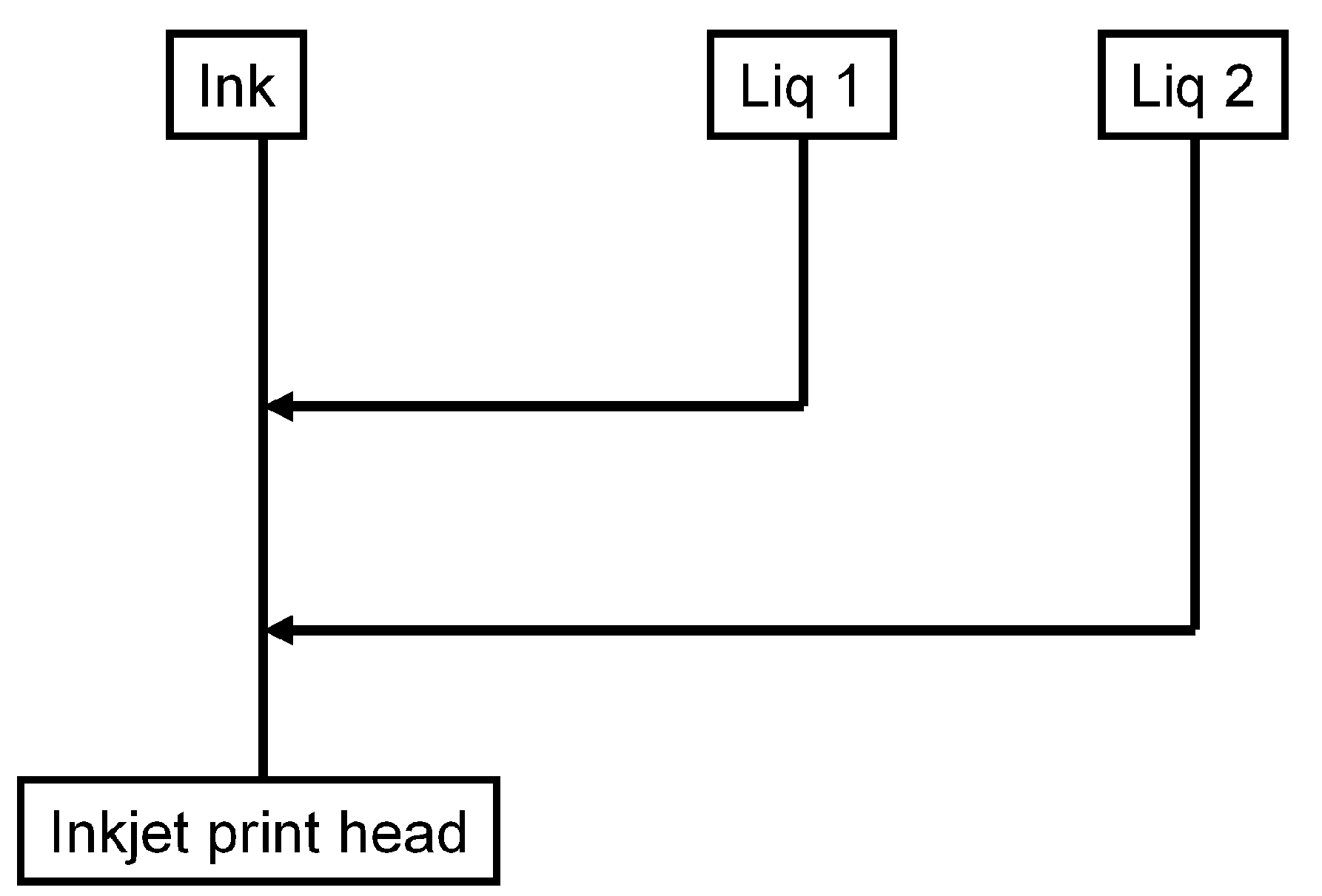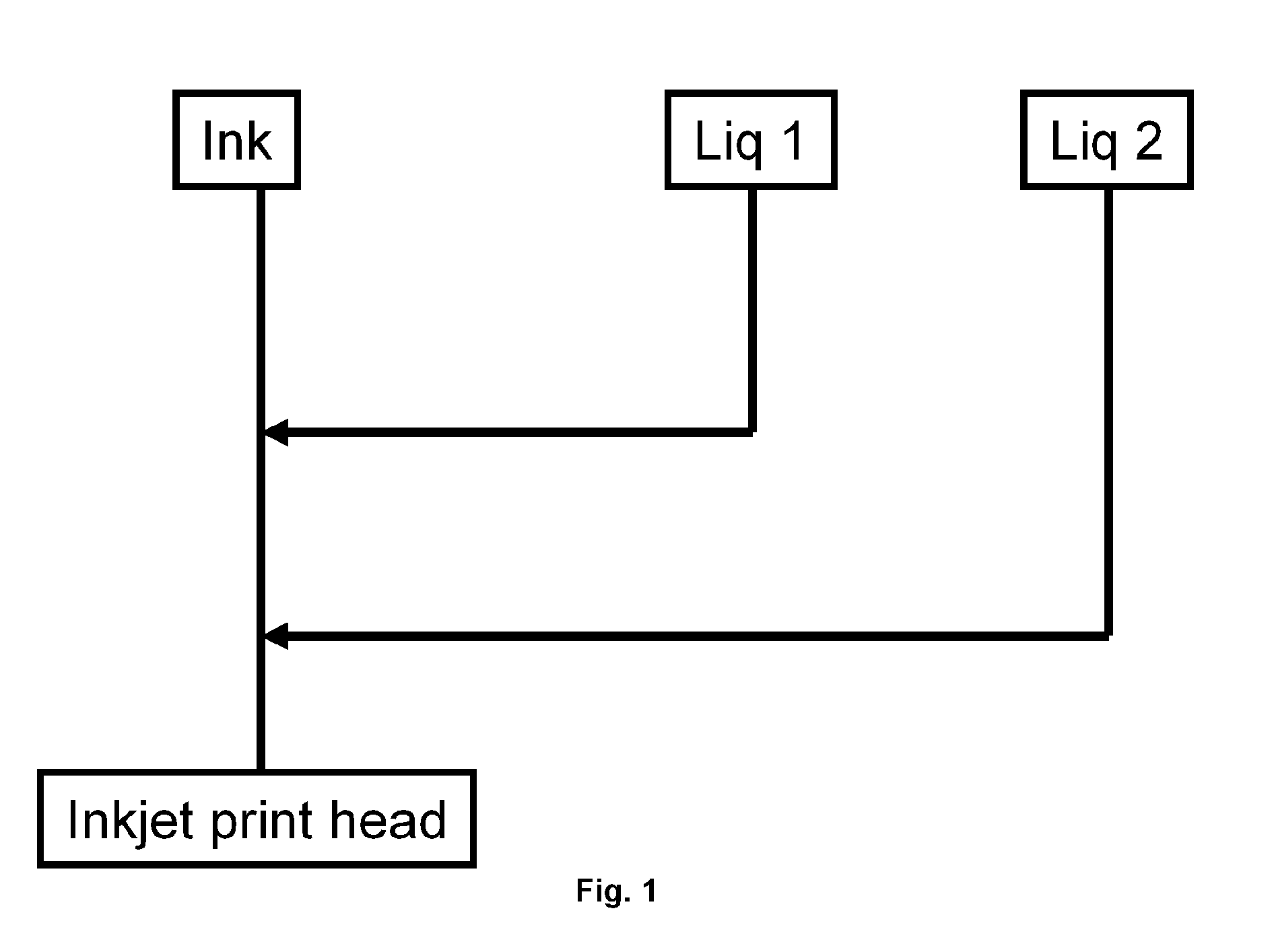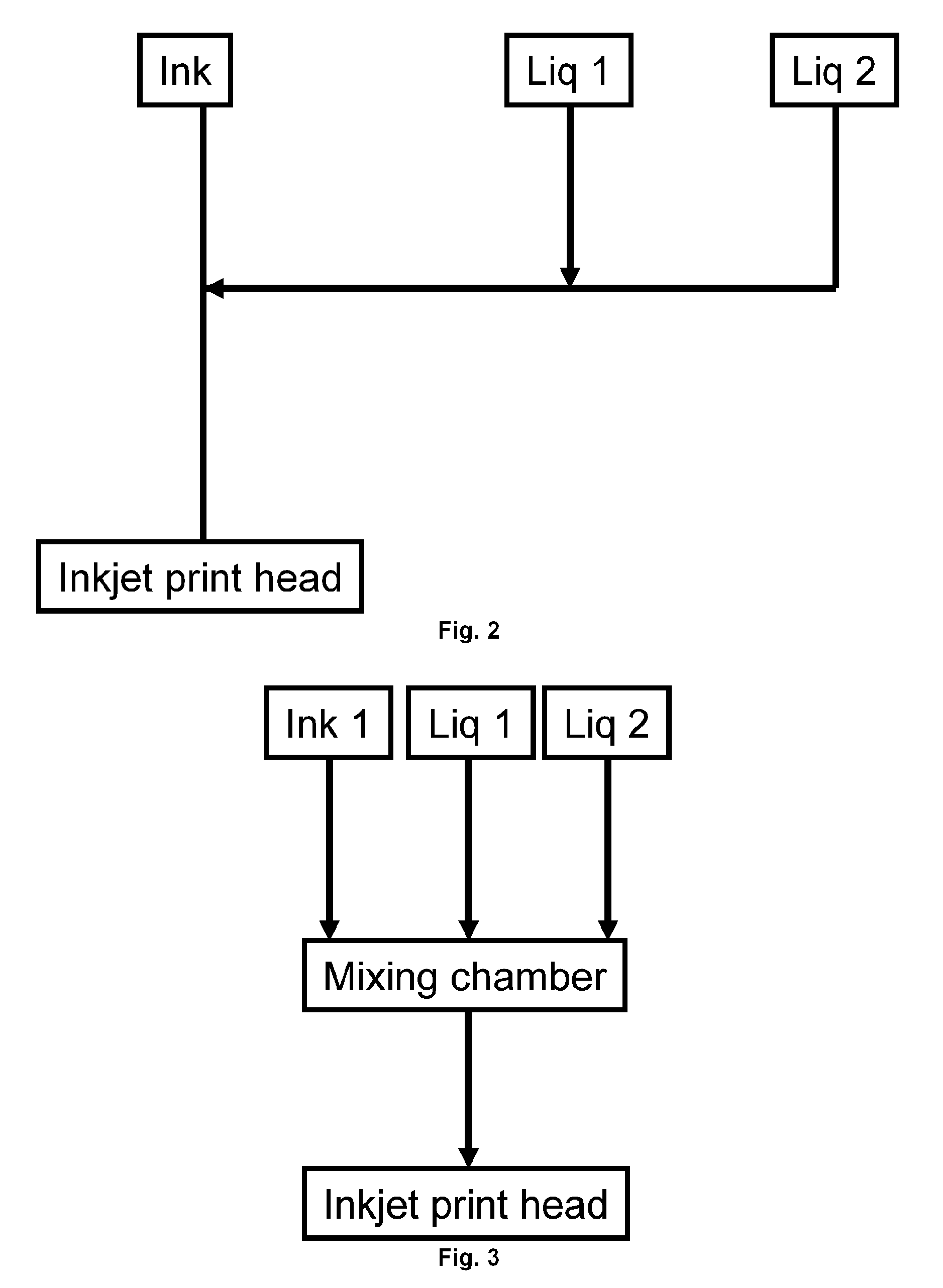Inkjet printing methods and ink sets
a technology of inkjet printing and inkjet ink, which is applied in the direction of inks, printing, instruments, etc., can solve the problems of color gamut and image quality differences, and achieve the effect of adhesion of the image to the substra
- Summary
- Abstract
- Description
- Claims
- Application Information
AI Technical Summary
Benefits of technology
Problems solved by technology
Method used
Image
Examples
example 1
[0398]This example illustrates how the same dotsize was obtained on different substrates using two curable liquids with a different surface tension.
Preparation of Inkjet Ink
[0399]A concentrated pigment dispersion P1 was prepared according to Table 2.
TABLE 2wt % of:P1CINQUASIA ™ Magenta RT-355-D20.0SOLSPERSE ™ 3500020.0GENORAD ™ 161.0DPGDA59.0
[0400]The concentrated pigment dispersion P1 was made by mixing 360.0 g of the pigment CINQUASIA™ Magenta RT-355-D, 36.0 g of a 50% solution of the inhibitor GENORAD™ 16 in DPGDA and g of a 35% solution of the polymeric dispersant SOLSPERSE™ 35000 in DPGDA for 30 minutes using a DISPERLUX™ Laboratory Dissolver YELLOW075 from DISPERLUX S.A.R.L., Luxembourg. The milling mixture was then milled at a rotation speed of 13 m / s and a flow rate of 0.6 L / min. under cooling by a NETZSCH™ LABSTAR1 at a 54.4% volume filling with yttrium-stabilized zirconium oxide-beads of 0.4 mm diameter (“high wear resistant zirconia grinding media” from TOSOH Co.) and a r...
example 2
[0408]This example illustrates a dotsize printing test on the substrates SUB-4 and SUB-6 (Biprint 650 gr) using a series of ink-mixtures based upon the same curable inkjet ink INK-1 and the colorless liquids LIQ-1 and LIQ-2 of EXAMPLE 1.
Printing and Evaluation
[0409]The resulting dotsizes for ink-mixtures 1 to 9 of the curable inkjet ink INK-1 and the colorless liquids LIQ-1 and printed in the same manner as in EXAMPLE 1 is shown in Table 8.
TABLE 8INK-MIXTURESurfaceSUB-4SUB-6INK-1LIQ-1LIQ-2tensionDotsizeDotsizeNo.wt %wt %wt %(mN / m)(μm)(μm)180.000.0020.0035.110576280.000.0319.9732.39568380.000.0719.9327.49671480.000.3319.6725.710069580.000.6719.3325.710070680.003.3316.6723.011273780.006.6713.3322.411987880.0013.336.6721.8123158980.0020.000.0021.8124175
[0410]From Table 8, it can be seen that for a dotsize of, for example, 120 μm that the ink-mixture No. 7 can be used on the substrate SUB-4. On substrate SUB-6 (Biprint 650 gr), the ink-mixture for a print dotsize of 120 μm lies somewher...
example 3
[0412]This example illustrates how improved adhesion was obtained for an ink-mixture of an inkjet ink and two colorless liquids, which would otherwise have unacceptable dispersion stability if prepared as such.
Preparation of Inkjet Ink
[0413]The concentrated pigment dispersion P2 was made by mixing 3750 g of the pigment PB15:4 and 9375 g of a 40% solution of the polymeric dispersant S35000 in BGA for 30 minutes using a DISPERLUX™ Dissolver from DISPERLUX S.A.R.L., Luxembourg. The dispersion was then milled under cooling with a DYNOMILL ECM Poly from Willy A. Bachofen AG Machinenfabrik filled with 20.521 kg of yttrium-stabilized zirconium oxide-beads of 0.4 mm diameter (“high wear resistant zirconia grinding media” from TOSOH Co.) for 4 hours and 23 minutes (residence time of 40 minutes) at a rotation speed of 14.7 m / s.
[0414]An inkjet ink INK-2 was prepared by diluting the pigment dispersion P2 with BGA to a concentration of 5.20 wt % of PB15:4 based upon the total weight of the ink. ...
PUM
| Property | Measurement | Unit |
|---|---|---|
| surface tension | aaaaa | aaaaa |
| viscosity | aaaaa | aaaaa |
| solubility | aaaaa | aaaaa |
Abstract
Description
Claims
Application Information
 Login to View More
Login to View More - R&D
- Intellectual Property
- Life Sciences
- Materials
- Tech Scout
- Unparalleled Data Quality
- Higher Quality Content
- 60% Fewer Hallucinations
Browse by: Latest US Patents, China's latest patents, Technical Efficacy Thesaurus, Application Domain, Technology Topic, Popular Technical Reports.
© 2025 PatSnap. All rights reserved.Legal|Privacy policy|Modern Slavery Act Transparency Statement|Sitemap|About US| Contact US: help@patsnap.com



